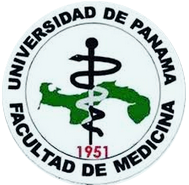Explorando un seminoma, encontrado en una ruptura testicular: reporte de caso.
[Exploring a seminoma, found in a testicular rupture: a case report. ]Randol Gabriel Mojica Flores1
1. Hospital Joaquín Pablo Franco Sayas, Chit´ré, Panamá.
Descargas
Resumen
Dentro de los traumas testiculares, el cerrado representa la mayoría de los casos, y por lo general afecta a hombres de 15 a 40 años de edad. Presentamos un hallazgo de seminoma clásico luego de un trauma incidental con posterior exploración quirúrgica y orquiectomía radical de testículo izquierdo. Se resalta la dificultad de las herramientas de investigación como la ecografía testicular para apoyo del médico. Los seminomas suelen ser masas homogéneamente hipoecoicas. Las imágenes por resonancia magnética pueden ayudar a confirmar que una masa es intratesticular y proporcionar datos para la estadificación local. La tomografía computarizada proporciona información valiosa para la estadificación, incluida la presencia y el tamaño de los ganglios linfáticos retroperitoneales. El manejo es limitado. Sin embargo, el seminoma testicular se trata con orquiectomía inguinal radical y es altamente curable incluso en etapas avanzadas de la enfermedad. La mayoría de los médicos eligen la orquiectomía seguida de vigilancia para pacientes con enfermedad seminomatosa en estadio I y quimioterapia o radiación, seguida de una cirugía para el manejo de masas residuales, para pacientes con enfermedad en estadio II y superior. Destacamos la importancia de la sospecha clínica en estos tipos de pacientes jóvenes y tener una búsqueda activa ante estos traumas triviales.
Abstract
Among testicular traumas, blunt testicular trauma represents the majority of cases and usually affects men between 15 and 40 years of age. We present a finding of classic seminoma after an incidental trauma with subsequent surgical exploration and radical orchiectomy of the left testicle. The difficulty of research tools such as testicular ultrasound for physician support is highlighted. Seminomas are usually homogeneously hypoechoic masses. Magnetic resonance imaging can help confirm that a mass is intratesticular and provide data for local staging. Computed tomography provides valuable information for staging, including the presence and size of retroperitoneal lymph nodes. Management is limited. However, testicular seminoma is treated with radical inguinal orchiectomy and is highly curable even in advanced stages of the disease. Most physicians choose orchiectomy followed by surveillance for patients with stage I seminomatous disease and chemotherapy or radiation, followed by surgery for management of residual masses, for patients with stage II and higher disease. We stress the importance of clinical suspicion in these types of young patients and having an active search for these trivial traumas.
Citas
[1] Rao, M. S., & Arjun, K. (2012). Sonography of scrotal trauma. The Indian Journal of Radiology & Imaging, 22(4), 293-297. DOI: https://doi.org/10.4103/0971-3026.111482
[2] EAU guidelines: Urological Trauma. (January 31, 2015). Uroweb.Org. https://uroweb.org/guideline/urological-trauma/.
[3] Michael S Runyon, MD, MPH. (2021). Blunt genitourinary trauma: Initial evaluation and management. Apr 05, 2021, UpToDate, website: https://www.uptodate.com/contents/blunt-genitourinary-trauma-initial-evaluation-and-management.
[4] Lunawat, R., Craciun, M., Omorphos, S., Weston, P., & Biyani, S. (2014). Seminoma presented as testicular rupture: Case report and literature review. Canadian Urological Association Journal, 8(9-10), 749. https://doi.org/10.5489/cuaj.2194. DOI: https://doi.org/10.5489/cuaj.2194
[5] Testicular Seminoma: Practice Essentials, Background, Pathophysiology. Emedicine.medscape.com. (2021). Retrieved 30 July 2021, from https://emedicine.medscape.com/article/437966-overview. Accessed: July 6, 2021.
[6] Gilligan, T., Lin, D. W., Aggarwal, R., Chism, D., Cost, N., Derweesh, I. H., Emamekhoo, H., Feldman, D. R., Geynisman, D. M., Hancock, S. L., LaGrange, C., Levine, E. G., Longo, T., Lowrance, W., McGregor, B., Monk, P., Picus, J., Pierorazio, P., Rais-Bahrami, S., … Pluchino, L. A. (2019). Testicular Cancer, version 2.2020, NCCN clinical practice Guidelines in oncology. Journal of the National Comprehensive Cancer Network: JNCCN, 17(12), 1529-1554. DOI: https://doi.org/10.6004/jnccn.2019.0058
[7] Cassie, G. F. (1956). Rupture of the testis: seminoma. British Journal of Urology, 28(3), 283. DOI: https://doi.org/10.1111/j.1464-410X.1956.tb04772.x
[8] Cutajar, C. L. (1972). Spontaneous rupture of testicular teratoma. British Medical Journal, 1(5793), 154-155. DOI: https://doi.org/10.1136/bmj.1.5793.154
[9] Liu, S. P., Huang, S. W., Lin, K. H., Lin, M. C., & Hsieh, J. T. (2001). Ruptured cystic teratoma of the testis in a neonate. Taiwan Yi Zhi [Journal of the Formosan Medical Association], 100(11), 779-781.
[10] LaMONTAGNE, A. E., Jr. (2002). Spontaneous rupture of A testicular tumor. The Journal of Urology, 1787-1788. DOI: https://doi.org/10.1097/00005392-200204000-00051
[11] Luchey, A., Rogers, A., Saunders, S. E., Williams, H. J., Fooks, H. J., & Zaslau, S. (2009). Blunt testicular trauma results in rupture of mixed germ cell tumor. The Canadian Journal of Urology, 16(6), 4955-4957.
[12] Amin, M. B., Edge, S. B., Greene, F. L., Byrd, D. R., Brookland, R. K., Washington, M. K., Gershenwald, J. E., Compton, C. C., Hess, K. R., & Sullivan, D. C. (Eds.). (2018). AJCC Cancer Staging Manual. Springer International Publishing.
Licencia
Derechos de autor 2021 Infomedic Intl.Derechos autoriales y de reproducibilidad. La Revista Médica de Panama es un ente académico, sin fines de lucro, que forma parte de la Academia Panameña de Medicina y Cirugía. Sus publicaciones son de tipo acceso gratuito de su contenido para uso individual y académico, sin restricción. Los derechos autoriales de cada artículo son retenidos por sus autores. Al Publicar en la Revista, el autor otorga Licencia permanente, exclusiva, e irrevocable a la Sociedad para la edición del manuscrito, y otorga a la empresa editorial, Infomedic International Licencia de uso de distribución, indexación y comercial exclusiva, permanente e irrevocable de su contenido y para la generación de productos y servicios derivados del mismo. En caso que el autor obtenga la licencia CC BY, el artículo y sus derivados son de libre acceso y distribución.









